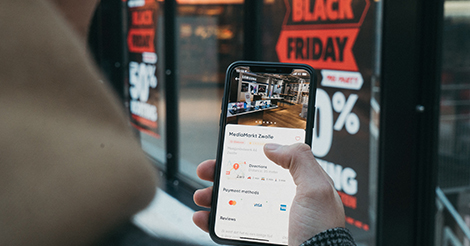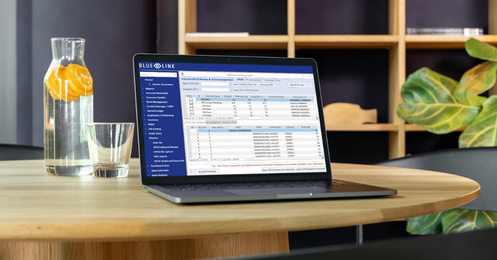Selling products across multiple sales channels is a well-established practice, and with advancing technology, the variety of these channels continues to grow, offering new opportunities for businesses and consumers worldwide. The omni-channel business strategy integrates various sales channels to provide a seamless customer experience, allowing buyers to interact with a brand through multiple platforms. In the B2B sector, this is achieved through phone calls, email, tradeshows, showrooms, EDI, marketplaces like Amazon, retail brick-and-mortar stores, and increasingly through eCommerce websites and order portals. It’s important to understand that 80% of buyers will find another supplier if they’re unable to purchase from any of the above channels.
Within the B2C sector, social selling is increasingly prevalent, especially among omni-channel businesses. Research indicates that 94% of social sellers also engage in selling through their own website or third-party online marketplaces.
However, successful businesses understand that it takes more than just listing products on multiple platforms; managing inventory across these platforms is crucial. Without proper management, businesses risk:
- Customers encountering out-of-stock notices online which may be inaccurate
- Salespeople selling unavailable products hindering the shipping process
- Warehouses overstocking or understocking items impacting costs
- Employees manually updating information across systems which is prone to human error
- Lacking an accurate view of business health
What Does Omni-Channel in Distribution Mean?
Distribution businesses typically sell to other businesses and, in some cases, directly to end consumers. To satisfy both markets, a centralized software system is essential for managing key aspects of omni-channel distribution, including:
Unified Inventory Management
Inventory is managed collectively across all channels, allowing for real-time visibility and efficient stock allocation. This ensures that customers can see accurate product availability anywhere they shop.
Consistent Customer Experience
Regardless of the channel, customers receive a consistent brand experience, including product information, pricing, promotions, and customer service.
Seamless Integration
All channels are integrated so that data flows smoothly between systems. This integration supports functionalities such as drop-shipping from third-party logistics (3PL) warehouses or the manufacturer, click-and-collect (buy online, pick up in store), and rebates (if selling to other businesses).
Flexibility and Convenience
Customers have the flexibility to start a purchase in one channel and complete it in another, providing convenience and enhancing their overall shopping experience. For example, a distribution business might have recently set up a B2B Online order portal to allow their customers to shop online. If the customer decides they want to complete the order over the phone, with a successful omni-channel strategy, a sales representative will be able to view their account and complete the sale.
What Does Omni-Channel Software Do?
The addition of sales channels increases the complexity of a business, which can make it challenging to find a software system to manage all channels in one database.
This is where fully integrated accounting and inventory Enterprise Resource Planning (ERP) systems come into play to manage the above key aspects. An all-in-one solution allows you to gain control and provides insight into all retail and wholesale orders coming from multiple channels. Although information gets stored in one database, users can still distinguish between types and sources of orders. This eliminates the need to pull information from multiple systems when managing orders, and ensures you always have up-to-date inventory information. Overall, omni-channel software helps businesses deliver a consistent, efficient, and satisfying customer experience across all touchpoints.
What Omni-Channel Software Features Should a Distribution Business Look For?
You may already know that ERP software includes tools for managing inventory and accounting, but it also offers essential integration features for your omni-channel strategy. For a distribution business looking to sell through multiple channels, ERP software provides functionalities such as:
- eCommerce Integration
- Mobile Sales Applications
- EDI Integration
- Multiple Inventory Locations
- Shipping
- Point-Of-Sale (POS)
eCommerce Integration
As you start selling products online through multiple eCommerce sites, it is crucial to integrate them with your ERP inventory system using API functionality. This enables easy, bi-directional communication between your website and marketplaces like Amazon, allowing seamless sharing of order details, credit card information, shipping and billing addresses, contact information, and product details such as pricing and quantities.
Proper integration ensures inventory information is always up-to-date and minimizes the need for manual intervention. Whether you have your own online store, sell through sites like Amazon, or both, sophisticated two-way integration is essential. It allows data to flow between your back-end system and online storefronts, accurately reflecting sales and inventory. Items purchased online are updated in your back-end system for further processing, and inventory received is entered once and pushed online. This eliminates manual double entry and keeps all systems synchronized.
Mobile Sales Applications
If your business sells products at tradeshows, while onsite with customers or in a showroom, consider an ERP software solution that can function alongside mobile and tablet devices through a B2B Ordering Platform. Much like an eCommerce site, a B2B order platform is able to connect to your distribution inventory software database so that you can show customers available inventory and product information in the field, and then directly place an order while speaking with them. This eliminates the need for entering and managing orders once back in the office from being on the road or at trade shows and order information is synced between the two solutions in real-time.
This channel works well for businesses that would benefit from a visually appealing representation of products.
The application also enables customers to effortlessly submit orders, which are seamlessly transmitted to the backend, ensuring real-time updates of inventory information. By offering a self-service interface, customers are empowered to place orders at their convenience, granting them autonomy while ensuring complete control over purchases via secure logins. This not only accommodates their unique requirements and business hours but also eliminates the necessity of hiring additional staff to manage internal processes.
EDI Integration
Electronic Data Interchange (EDI) allows companies with different hardware/software systems to exchange business documents and information in a common format. Proper EDI integration means information flows between your distribution inventory system and that of your vendors or customers, without the need for employees to manually find, enter and update data across multiple platforms. This provides opportunities to work with big-box retailers who require the use of EDI for communication with trading partners such as Walmart and Costco.
Multiple Inventory Locations
When a company starts selling through multiple channels, they often store inventory in various locations, such as their own warehouses, 3PLs, manufacturers for drop shipping, and brick-and-mortar stores. Software that provides visibility into product availability at each location and allows for easy inventory transfers, enhances the efficiency of order management and improves customer satisfaction.
Shipping
Integration with shipping carriers indeed streamlines the entire shipping and receiving process, from order fulfillment to delivery. By seamlessly transferring data between your inventory management system and the carriers' systems, you eliminate the need for manual entry, which not only saves time but also reduces the risk of errors. Plus, having multiple freight options at your fingertips allows you to make informed decisions based on factors like cost, delivery time, and service level agreements, optimizing your shipping strategy for each purchase order. This level of automation and flexibility not only improves efficiency but also helps in cutting down unnecessary expenses associated with shipping. It's a win-win situation for both you and your customers.
Point-Of-Sale (POS)
Having a retail component, whether it's a physical store or showroom, means that integrating a POS system can streamline operations by consolidating multiple systems. When a sale is made in-store, the system generates an order and automatically updates inventory levels. This ensures a seamless experience for customers ordering through various channels like online or over the phone, preventing any inventory discrepancies or issues.
Conclusion
Expanding your product sales across multiple channels requires a seamless flow of information, which entails automating processes, consolidating data within a unified database, and ensuring effective integration of channels and applications. Rather than introducing new software for each sales channel, an optimal distribution inventory system should facilitate effortless integration and data sharing across platforms, eliminating the need for manual intervention. This approach not only streamlines operations but also enables scalability, empowering your business to efficiently manage growth across diverse sales channels without unnecessary complexity or additional software overhead.










